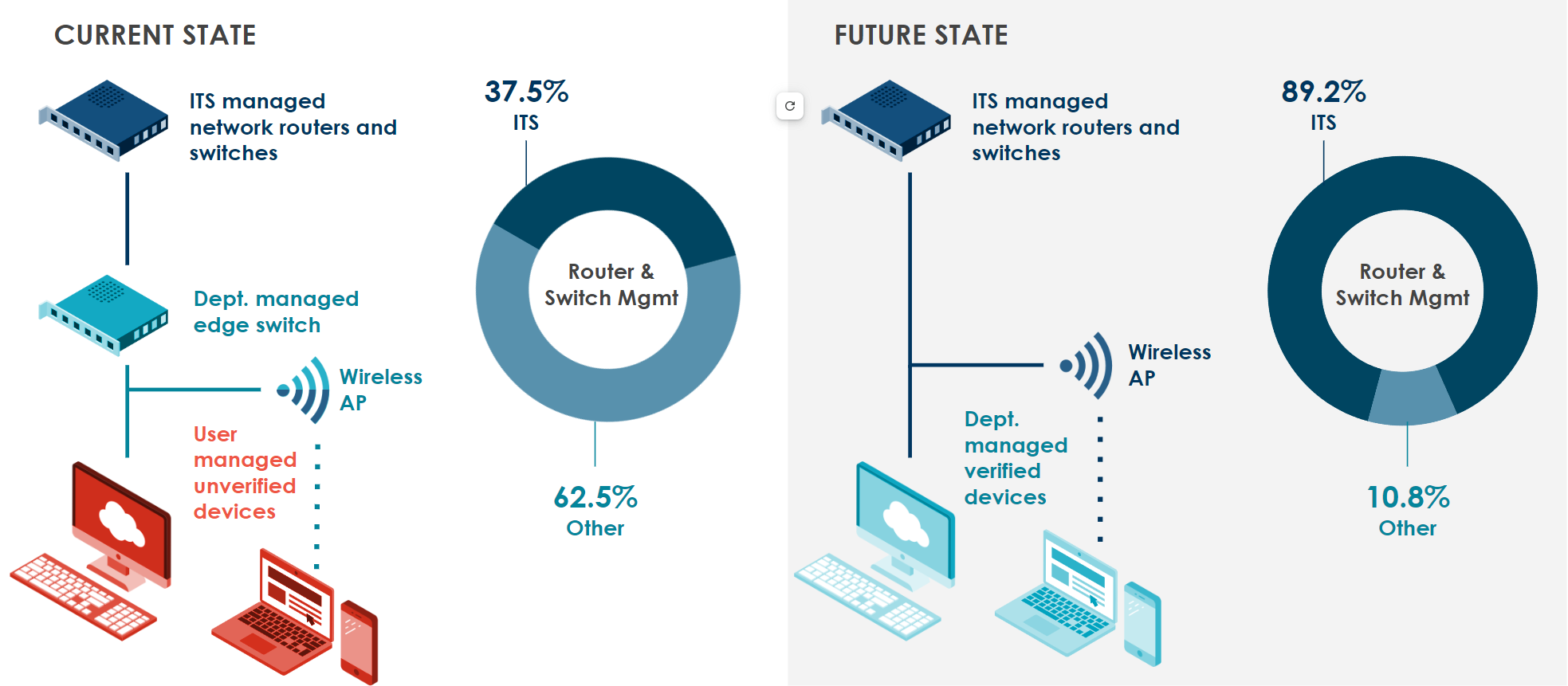As part of the work required by the UCOP mandate, we must perform network upgrades to 447 buildings on campus before May 2025. These upgrades will result in network outages varying in downtime depending on complexity.
Plan ahead for network outages
Please review the schedule below, and take note of buildings scheduled for outages in the next 14 days to a month. The scheduling of these outages poses a complex challenge including information gathering with IT leads, procurement and ordering equipment, availability of installation vendors, and the impacts to building activities. These variables combined with the accelerated timeline limit our ability to do extensive advanced coordination for all buildings.
Every attempt is being made to send outage notifications at least 14 days in advance to identified building contacts. If you're a Building Administrator or Business Officer, we encourage you to bookmark this page and check back on a regular basis as more buildings are scheduled.
Completed buildings
Check if your building has already been upgraded. List of completed buildings.
Why are we upgrading our networks?
Our currently decentralized campus network is moving to a unified, centrally-managed network service model to increase cybersecurity measures and provide a consistent user experience across campus. Centralizing the network enables future segmenting capabilities, ensuring only devices that have not been compromised by cyber threats will have visibility to UCSB's most sensitive data. ITS leadership engaged in extensive consultation with executive groups, and the consensus was a unified UCSB network service is the right solution.

Additional information
Virtual webinar
On Oct. 22, 2024 we hosted a virtual Unified Network Service Transition webinar. Join Shea Lovan, Chief Technology Officer and Jackson Muhirwe, Director of Information Assurance and Chief Information Security Officer as they discuss upcoming changes to UCSB’s network services with Kevin Schmidt, Director of Network and Communications Services and Ben Price, Associate CIO, Administrative Services.
Frequently Asked Questions
Review our FAQs to learn more about the project, including technical details on scope and equipment.
Contact Us
Have questions or concerns about Secure UCSB?
Send us a message at secure-ucsb@it.ucsb.edu